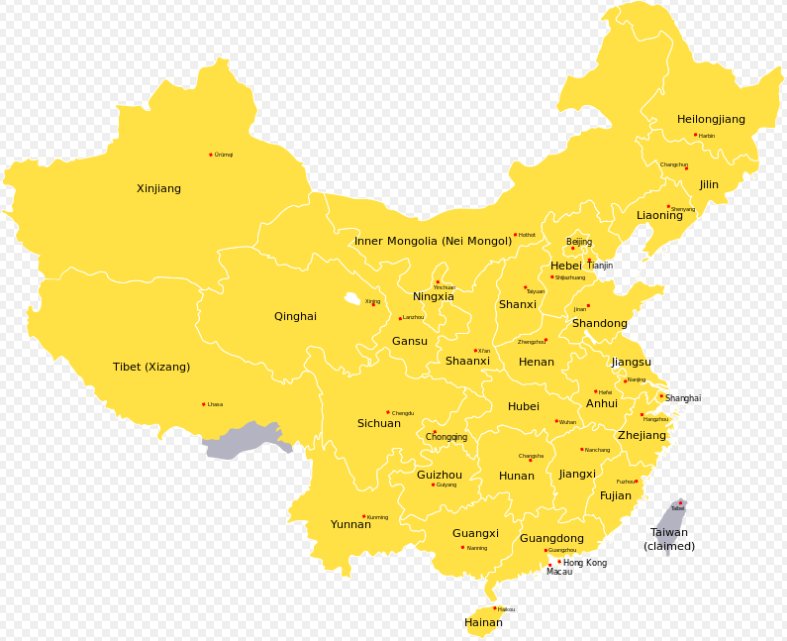The two countries that together account for 36% of humanity. And also happen to be neighbors
So one would expect these two nations to evince a great deal of interest in each other
While the average well-read Indian may be very familiar with Western history and Western thought in general, his familiarity with China is close to NIL. There is not even a territorial familiarity
But China? We usually draw a blank. This is a bit worrying.
It is 2.9 times as big as India yet has the same population.
Unlike India whose population is fairly evenly spread across the country, the centroid of the Chinese population is much further to the east than its geographic centroid
Unlike India, the standard deviation in the size of these territories is much much higher. And so is the standard deviation in population density
Tibet
Xinjiang
Ningxia
Inner Mongolia
Guangxi
These regions have greater autonomy than the regular provinces on account of their historic ethnic distinctiveness but today Ningxia and Guangxi are culturally Han Chinese, and v atypical in this group
Tibet
Xinjiang
Inner Mongolia
Here's a stunner - these 3 ARs account for 4 MM sq kms - 42% of China's area.
And yes larger than India!
Yet they account for just 50MM - 3.7% of China's population!
Worth pausing over
TIbet is ofcourse proudly Tibetan and the Hans haven't quite settled the area yet.
93% of Tibet comprises of TIbetans, with Hans accounting for just 6%
Yet unlike in Tibet, the Hans have managed to settle Xinjiang in very large numbers. While Uighurs are 45% of the population, Hans run them close at 41%
Also it is the most "Han-nified" of the 3 ARs. With Hans accounting for 79% of the population, while the Mongols constitute just 17%
So when we talk of Western China with a Chinese, it is not Xinjiang or Tibet. It is actually Sichuan / Chongquing - which appear to be in central China for us geographically
Here again, though every province is "Han" for the most part, the provinces at the extremes of this zone are still fairly sparse in population
454,000 sq kms, but just 38MM people.
That's larger than Karnataka and Tamil Nadu put together, but with fewer people than Kerala
It is only 67% Han - one of the lowest Han % among the provinces.
And has just 45MM people among its nearly 400,000 sq kms.
A country about the same size as India, with very similar population density.
This is the China of yore. And it has 96MM people concetrated on its small area of 154K sq km. Population density is 623 as of 2010!!
That's not much lower than the density of Uttar Pradesh.
79MM people over 100K sq kms. Density of nearly 800 per sq km. That's much much denser than say Tamil Nadu
This is excluding Hong Kong and Macau mind you, which are in the Guangdong region, but are regarded as separate entities.
Let's focus on the following provinces / municipalities -
Collectively their area is 2,9 MM sq. km - a little less than India's 3.3 MM sq km.
Their population is 1 Billion. Again a little less than India's 1.3 Bn.
Something that we tend to overlook.
But China has the option of spreading its wings and populating about 2/3rd of its land mass - which is not adequately Han-nified. At least not yet.






